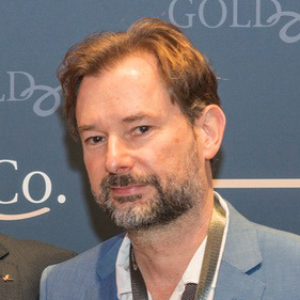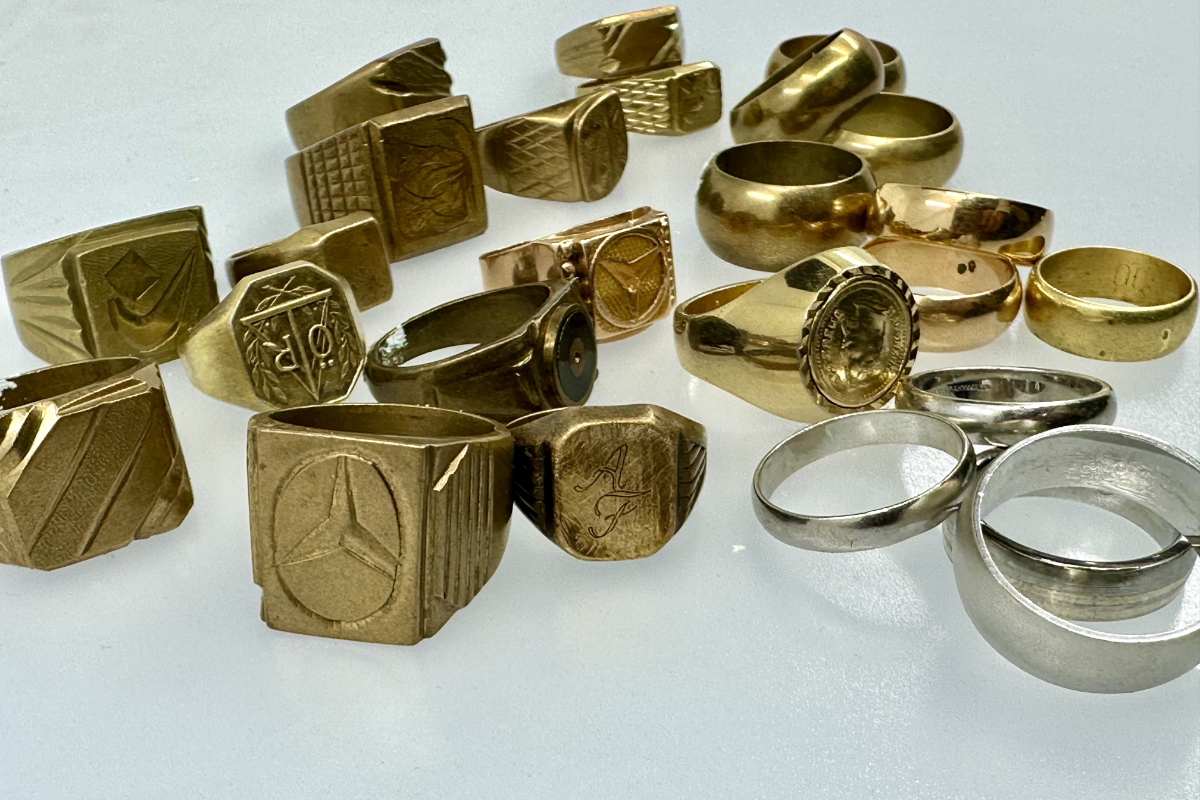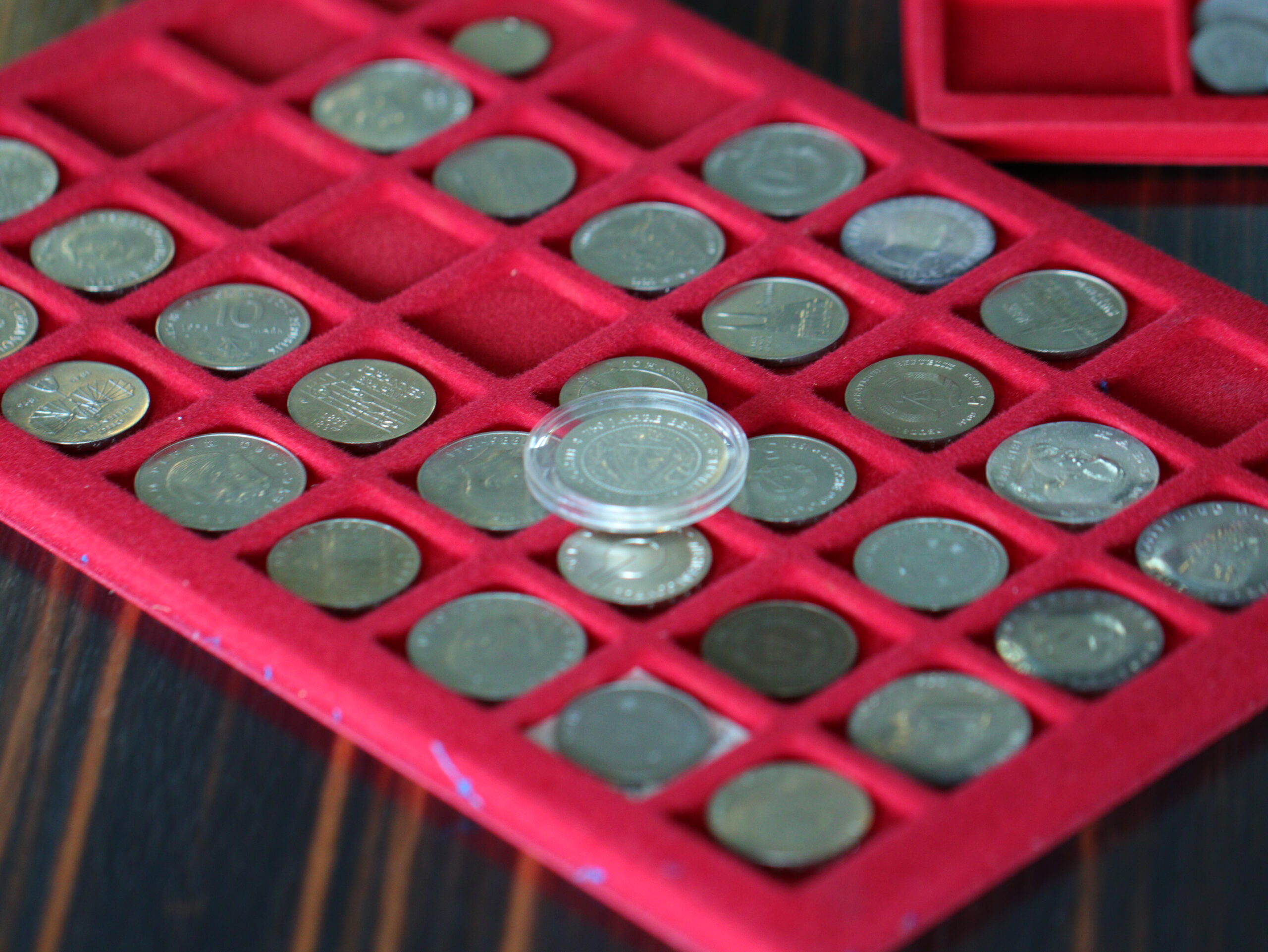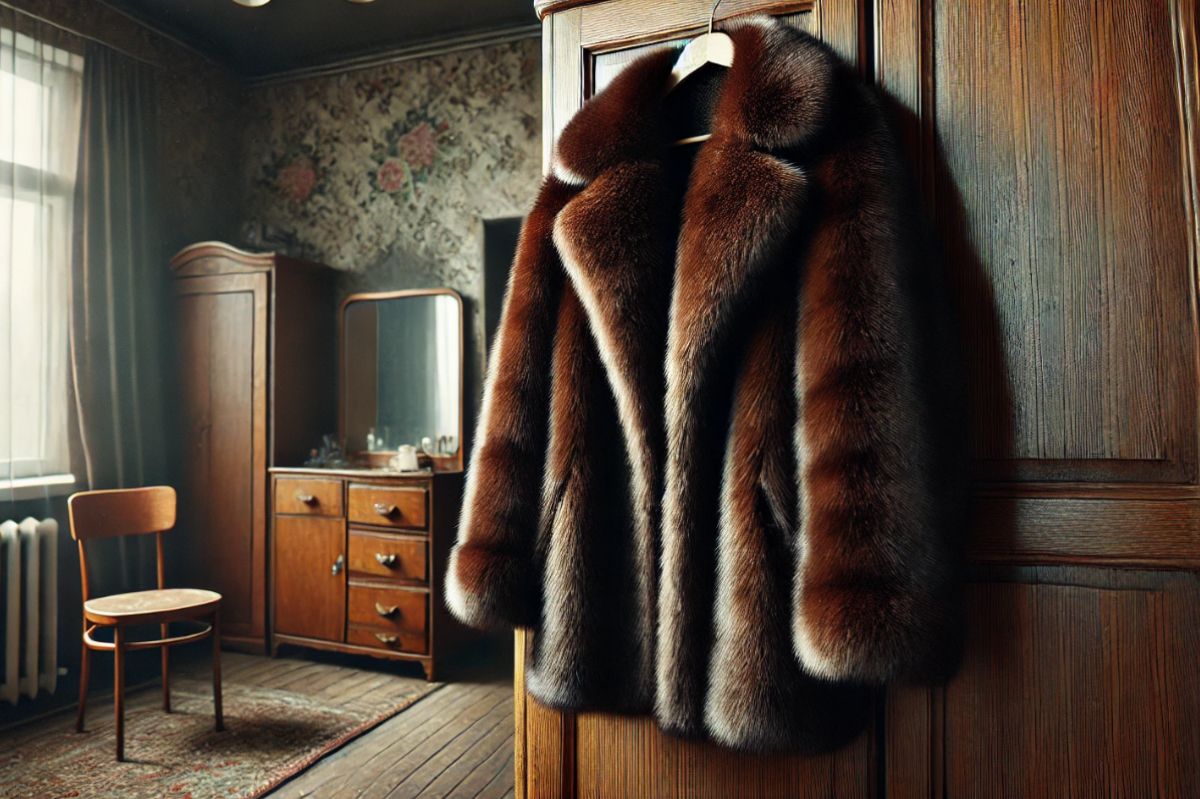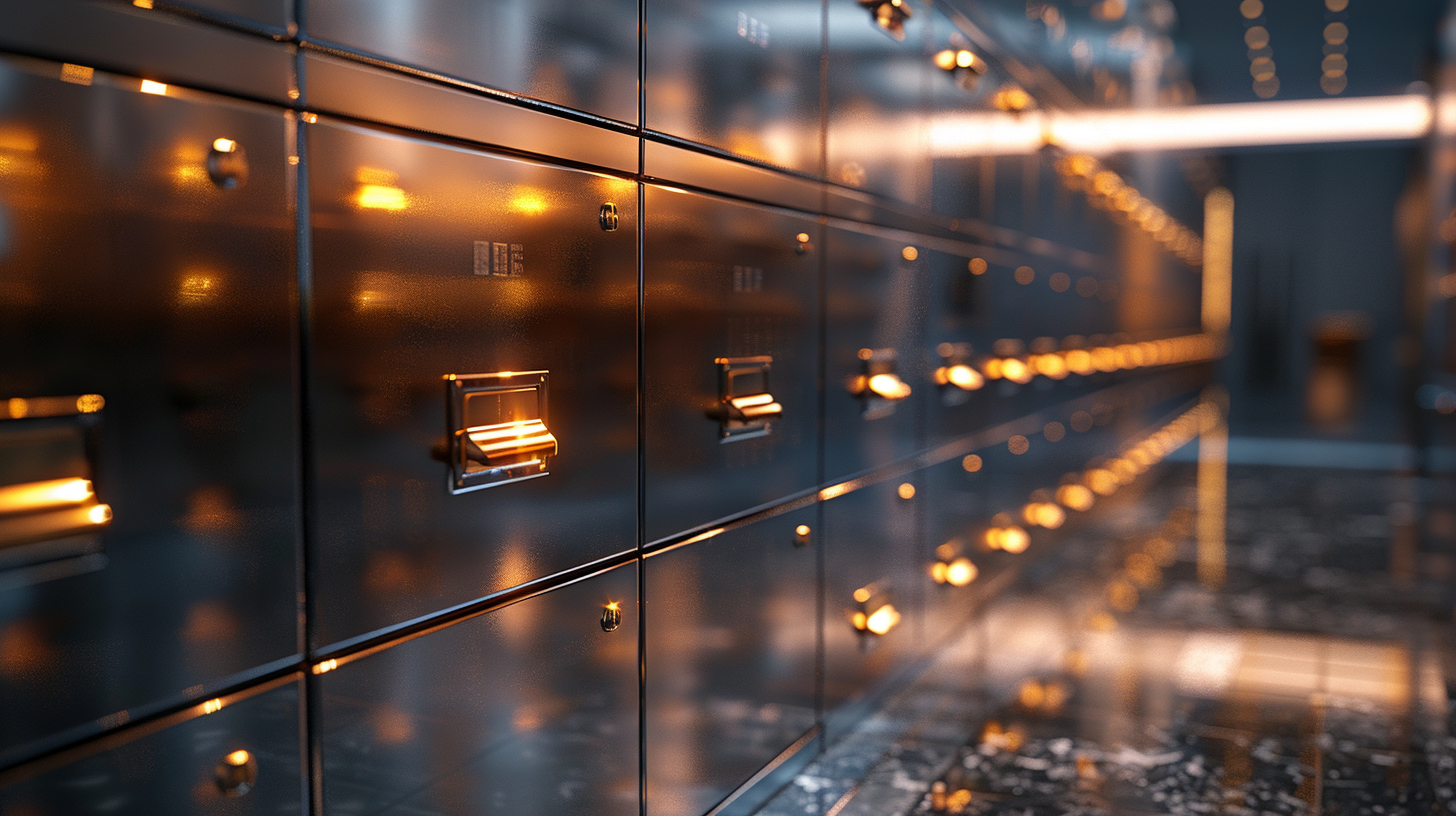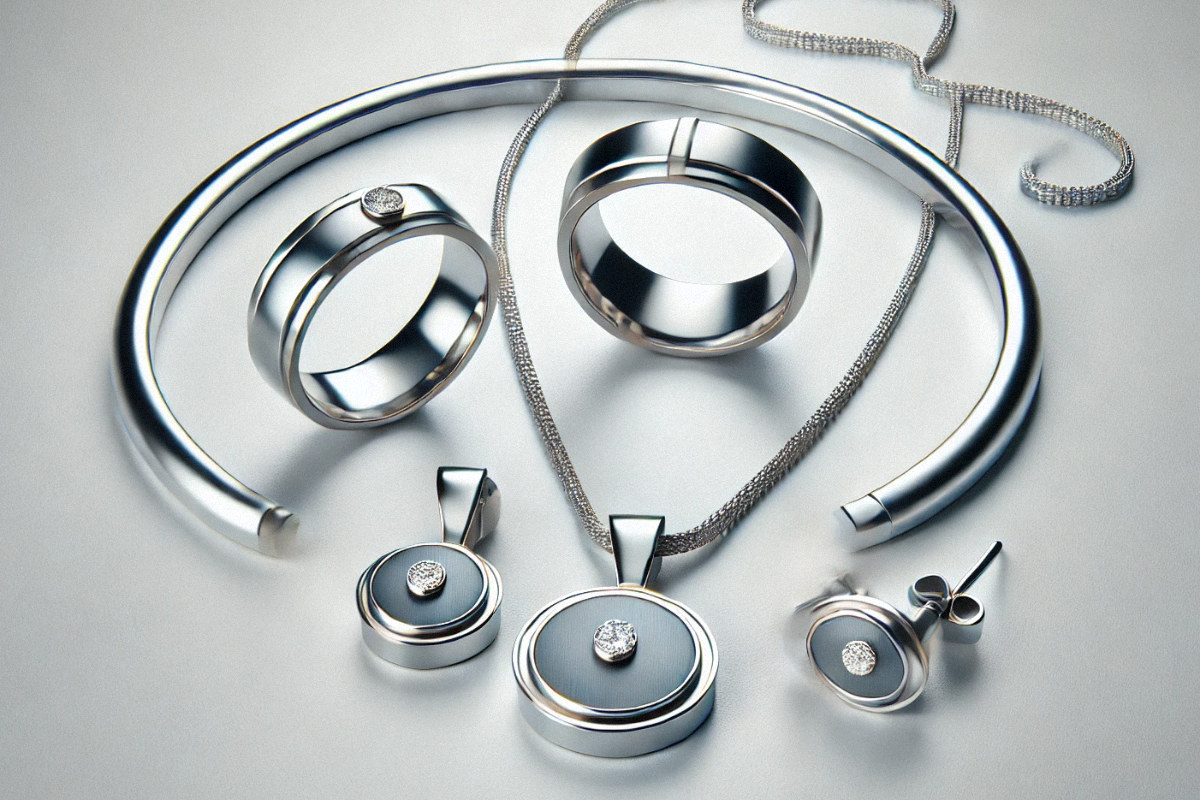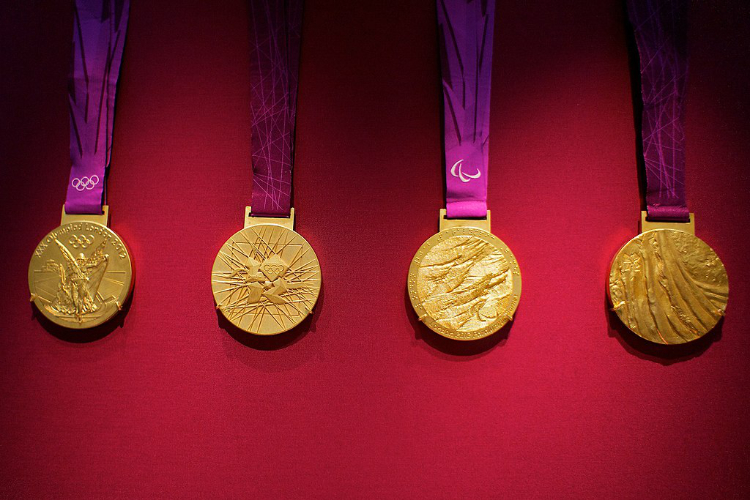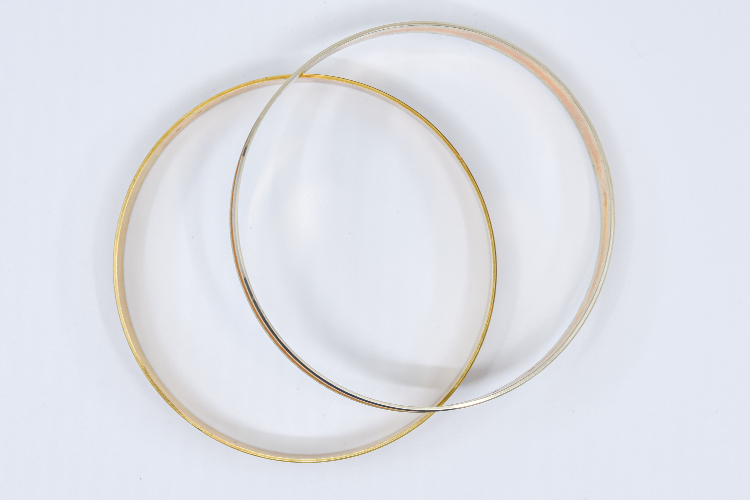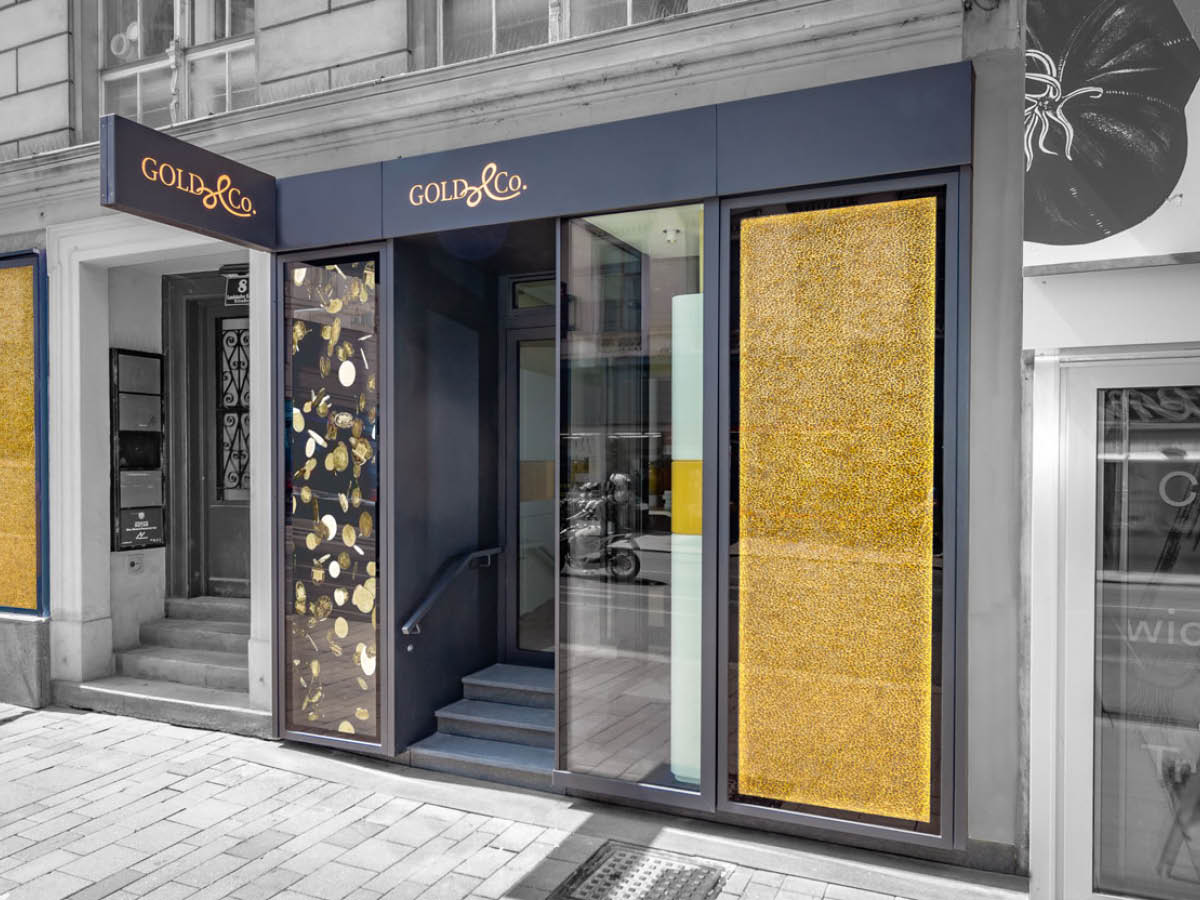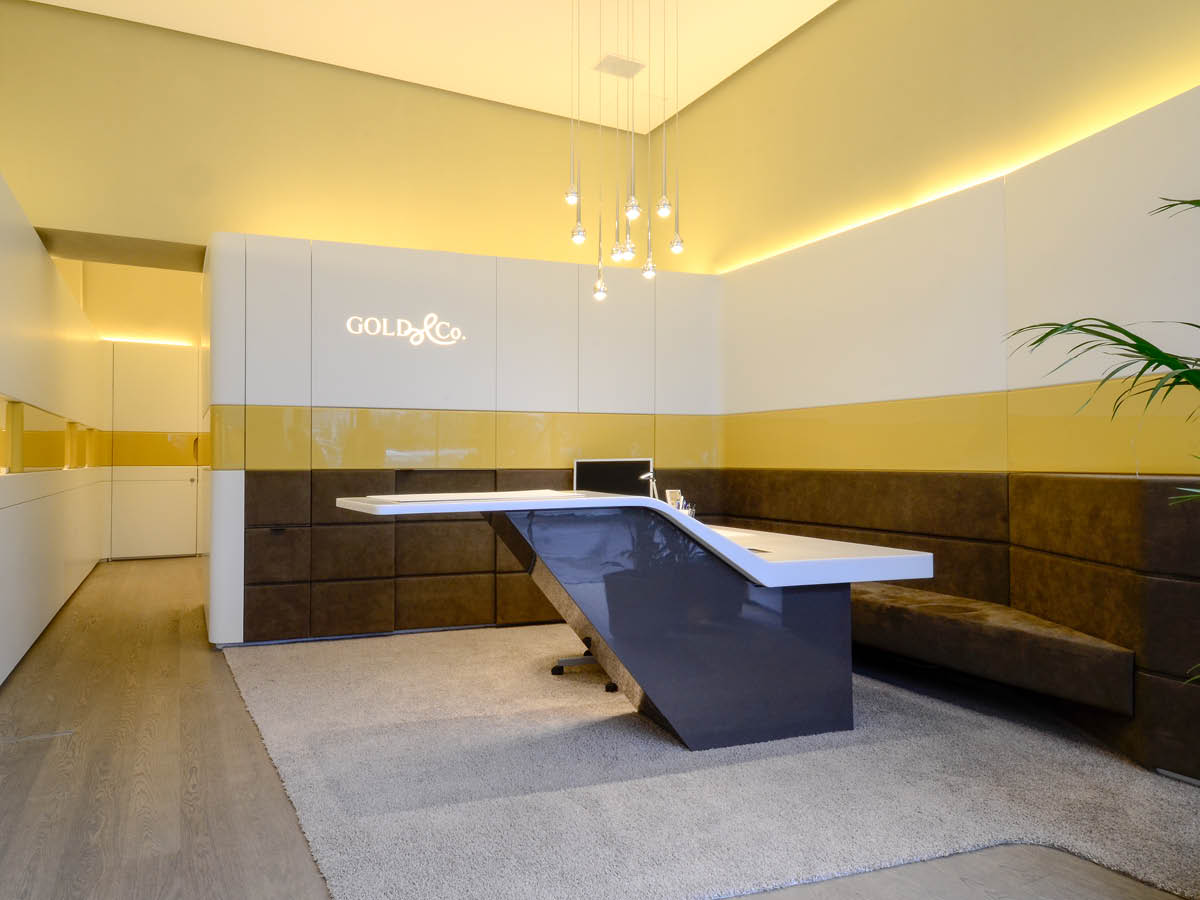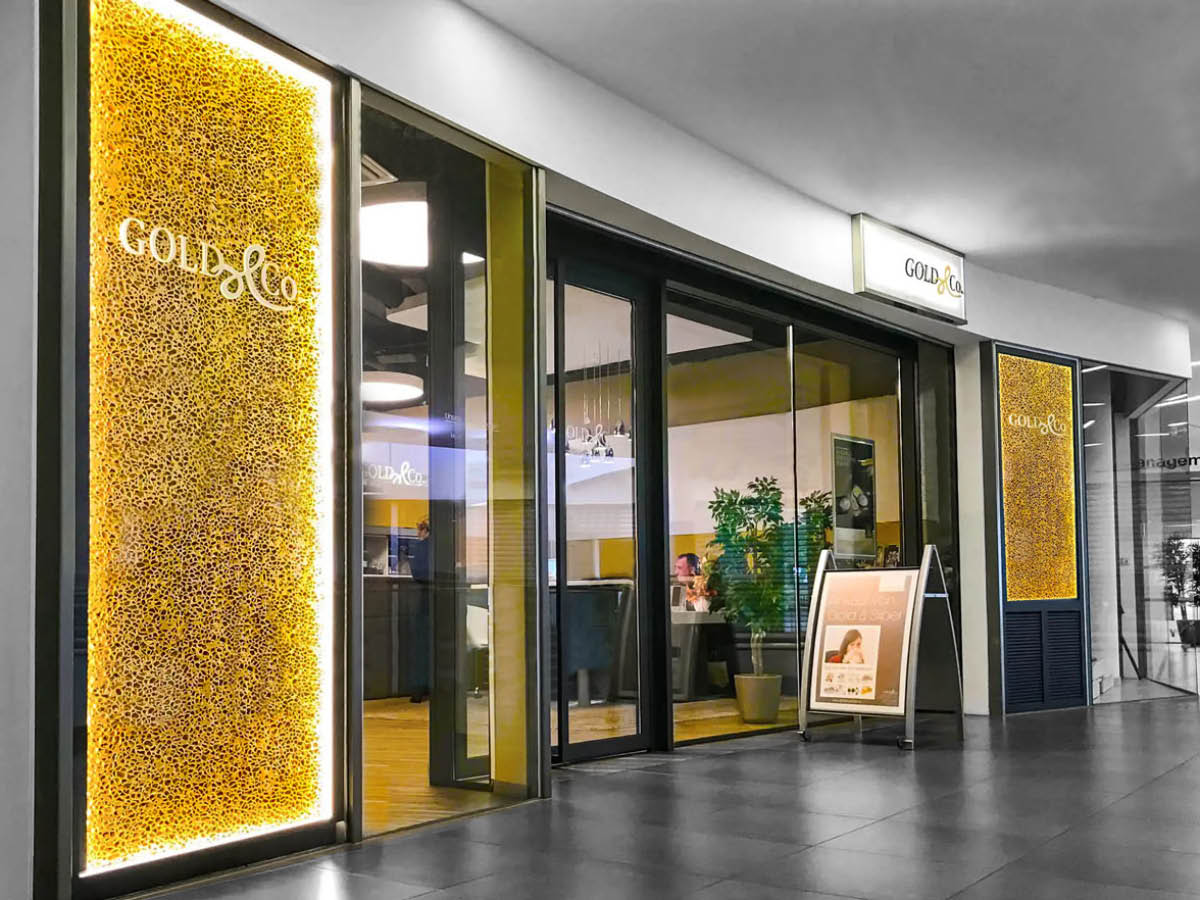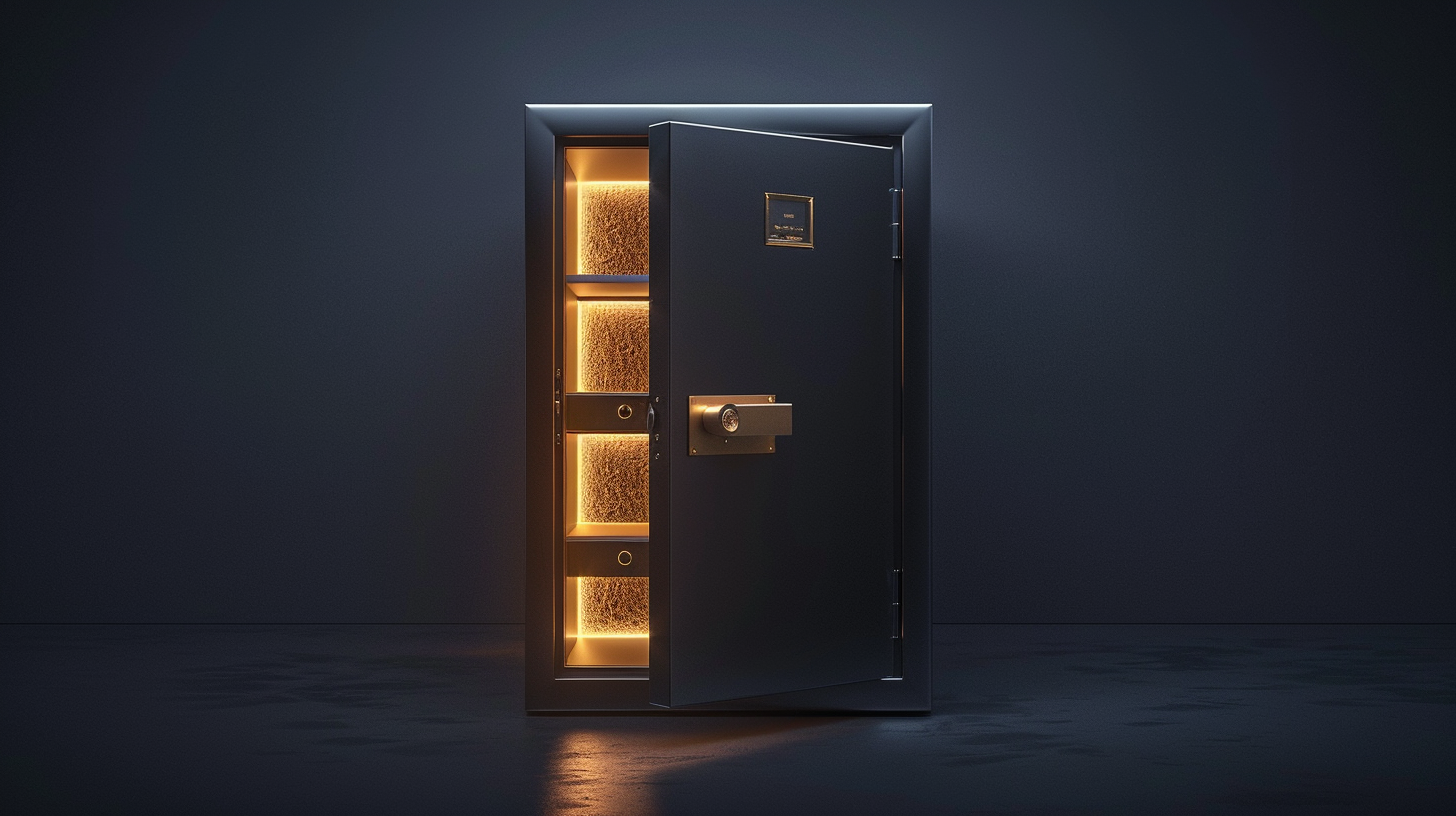
Storing precious metal at home
The desire to store valuables such as gold, cash, documents or sentimental possessions securely and yet within easy reach is understandable - especially in times of declining trust in banks or dwindling safe deposit box offers. A safe in your own home can be the right solution here. But anyone who thinks that a quick online purchase or a DIY store product will provide sufficient protection is mistaken. The market is confusing and the differences in quality are sometimes considerable. It is therefore worth taking a closer look at what really makes a good safe.
Safety starts with the body
The most important characteristic of a safe is its resistance to physical attack. The body - i.e. the housing - is central to this. If you save weight here, you are saving in the wrong place. A heavy safe with solid walls and a sturdy door offers significantly greater protection against attempted break-ins. Such cabinets cannot simply be carried away, which is already an effective obstacle. As a general rule, safes weighing less than 500 kilograms can be carried away by crooks in case of doubt - provided they are not secured.
Thick steel plates, continuous boltwork, narrow gaps - these are all criteria that determine quality. Blender safes that advertise with thick bolts but only use thin sheet metal on the inside are little more than sham solutions. Good safes can often be recognized by the fact that they feel mechanically "valuable": no scratching of the boltwork, no play in the door, and a full sound when closing.
The right lock: reliability before convenience
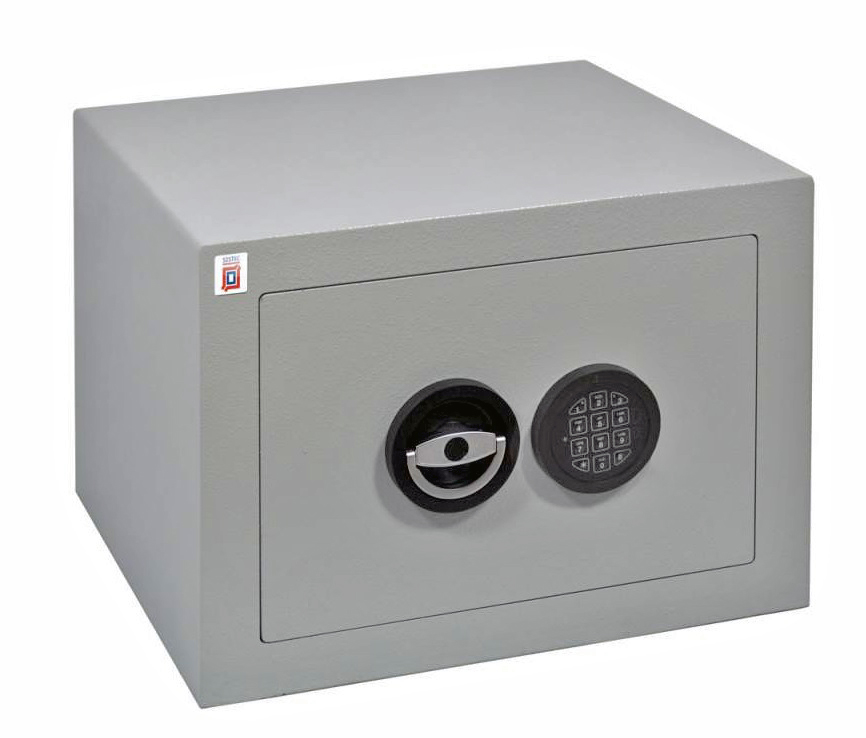
The lock is just as important. A basic distinction is made between mechanical and electronic systems. Mechanical locks, such as those with keys or dials, are considered to be particularly durable and less prone to errors. Electronic locks, on the other hand, offer more convenience, for example through programmable codes or fingerprint scanners. However, the electronics can become a weak point, particularly in inexpensive models - especially in damp environments or when batteries are changed frequently.
Combinations of both variants are considered particularly secure - so-called double locks. These combine a mechanical lock with an electronic component. This significantly extends the opening time for burglars and also makes targeted attacks on the technology more difficult. So-called redundant electronic locks are recommended, in which two independent units are installed - if one fails, the other takes over.
Certificates as a guide - but not as a guarantee
Security certificates provide an initial indication of the resistance class of a safe. The VdS and ECB-S certifications, which are divided into classes from S1 to V, are common. The higher the class, the greater the resistance to attempted break-ins. From class I, values of 50,000 euros and more can be stored, and even double that if a burglar alarm system is installed.
Old certifications such as VDMA A/B or RAL C1/C2 are officially considered obsolete, but often stand for a more solid construction. Used safes with these labels in particular are often more solid than modern lightweight safes with the same insurance value. Anyone who owns or wants to purchase an older but high-quality safe can have it classified by an expert.
Insurance cover
Also ask what percentage your insurance will cover in the event of investment gold (not gold jewelry) and have this entered in the policy. The safe size should correspond to the insured value of the contents and, if necessary, higher cover should be negotiated with the insurance company.
Also bear in mind that the value of your safe contents may change due to the fluctuating gold price and that the sum insured may have to be adjusted from year to year.
Used often better than new
In fact, buying a second-hand safe can be a sensible alternative - especially if you have a limited budget. Safes manufactured in the past, for example for banks or jewelers, often have enormous material thicknesses and weight. Even today, many of these safes are still of a higher quality than some new mass-produced products. Provided they have not been tampered with or damaged, such models can be classified for insurance purposes by means of an expert opinion. However, it is important to carry out an expert inspection beforehand.
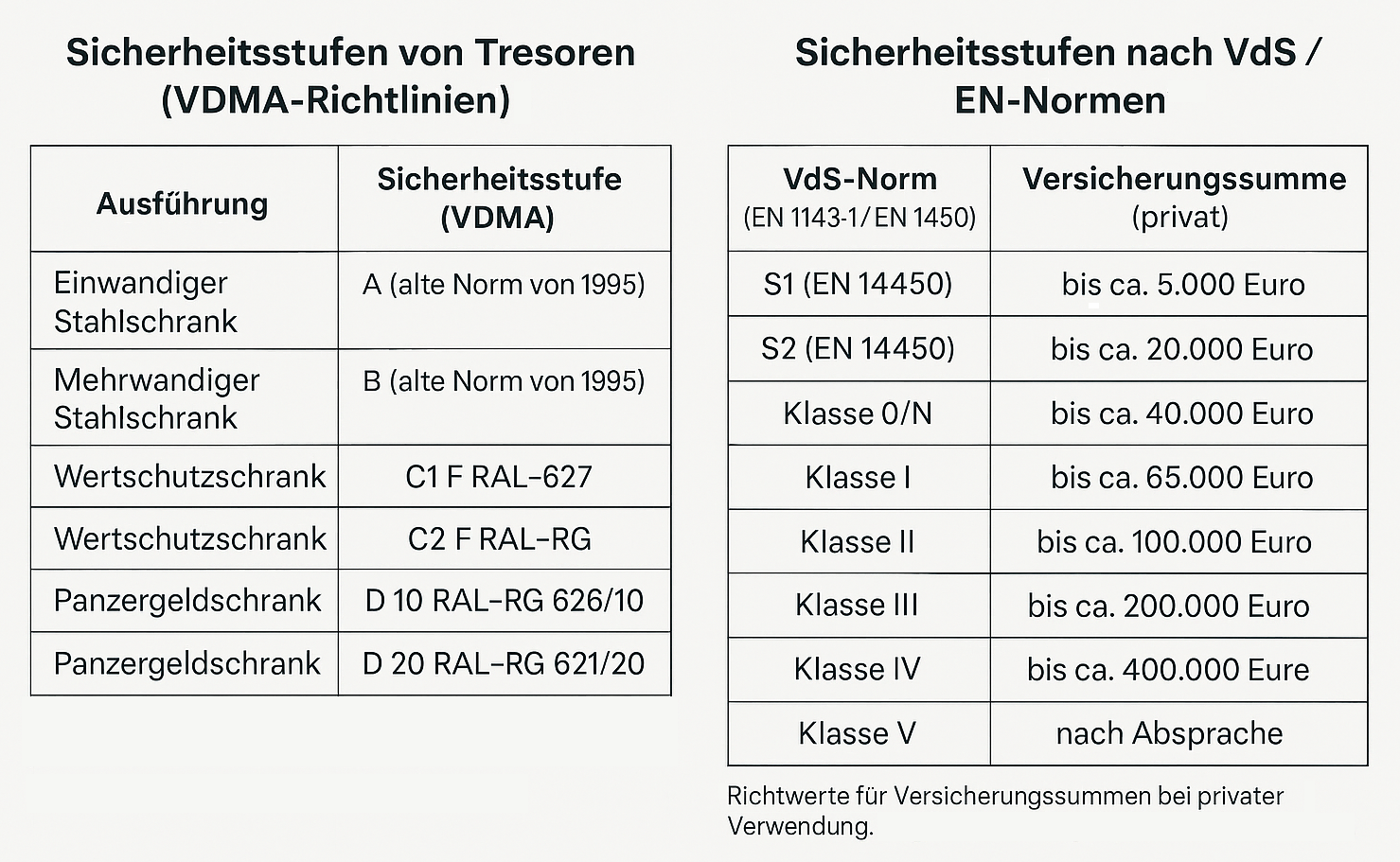
Fire and water - underestimated risks
In addition to burglary protection, fire protection also plays an important role. If you want to store important papers, data carriers or memorabilia, you should pay attention to fire-retardant properties. Modern safes use special seals that swell when exposed to heat and seal the door. In addition, insulating materials are used to prevent the interior from heating up too much.
Certificates such as S60P or LFS30P can help here. They indicate how long documents are protected in the event of fire - usually 30 to 120 minutes. Important: Gaps in the door or housing are critical. A gap of just a few millimetres can allow smoke or extinguishing water to penetrate.
Choosing a lock with a sense of proportion
The choice of lock should not be left to chance. Mechanical keys do not offer much security if they are poorly concealed or even lost. Electronic locks, on the other hand, require maintenance and - depending on their quality - are prone to defects. More expensive models with redundancy and a robust design offer clear advantages here. Particularly high-quality variants contain double circuit boards, motors and memory units. If one component fails, the second takes over - without any loss of function.
Two-factor locks - i.e. combinations of key and code - are also considered more secure against blackmail. This is because the key must be physically present, whereas a code can be forced at any time.
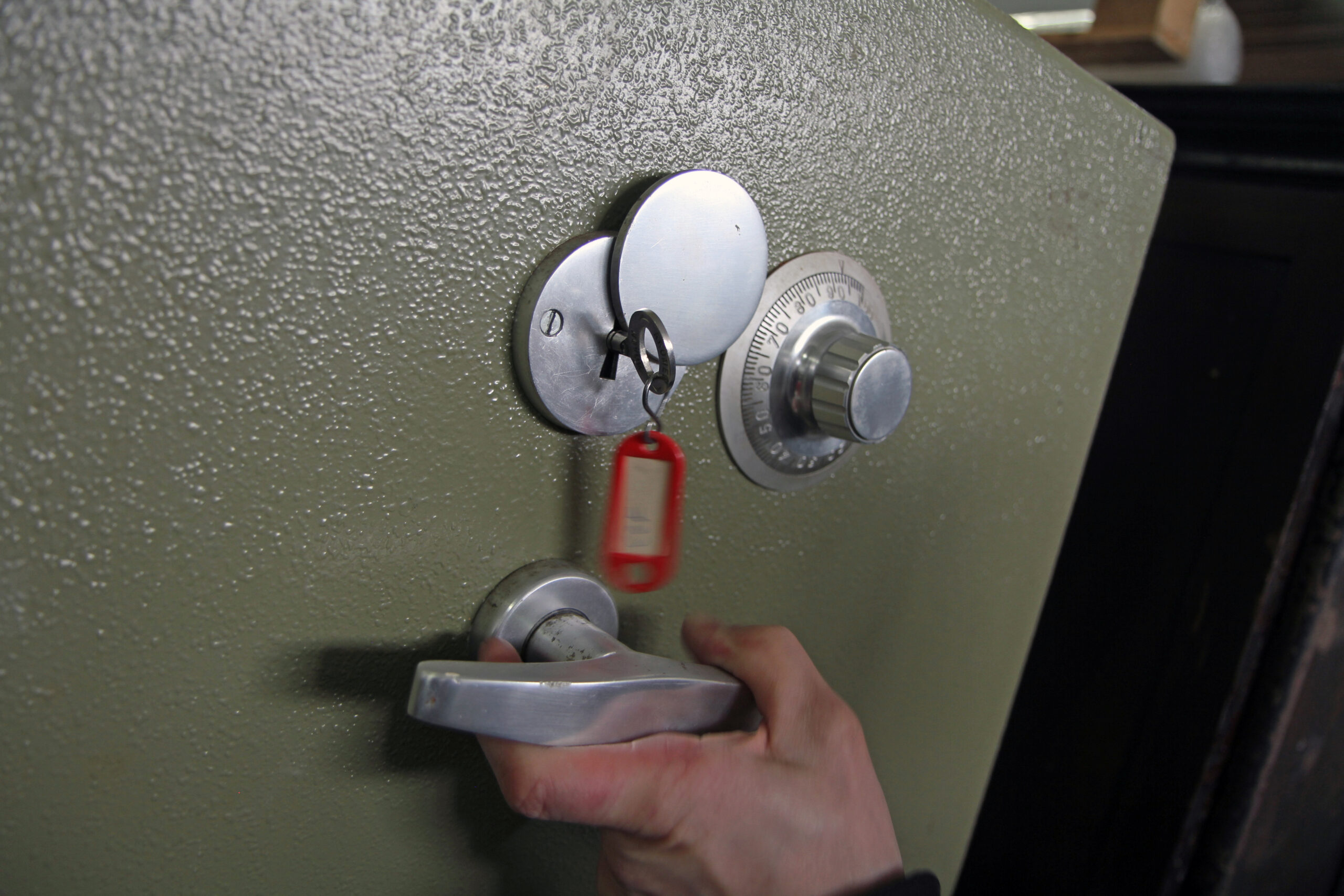
Beware of deception and cheap products
Many manufacturers sell identical products under their own brands or fantasy names. Quality can therefore not be recognized by the logo alone. In addition, some traditional companies have long since withdrawn from the market - their brands live on, often on Far East goods. Many modern safes are characterized by lightweight construction, with thin outer walls and little substance. This saves on transportation costs, but only offers limited resistance.
The choice of lock is also often a question of price. Some electronic locks only cost a few euros to buy - and their quality is correspondingly low. If you save money here, you risk your own security or expensive repairs in an emergency. If the lock fails and the safe can no longer be opened, professional intervention is often the only solution.
Customized solutions instead of standard models
Many retailers now offer the option of customizing or retrofitting safes - for example, if the desired cabinet does not fit into an existing niche or a different lock variant is required. However, no structural changes may be made that could jeopardize certification. An experienced dealer will point out such aspects and offer suitable solutions.
We recommend suppliers with many years of experience who offer advice and can show you different models on site. Specialist knowledge pays off, especially with used goods or special requests.
Conclusion: Safety is no coincidence
A safe is not a simple item to buy - it is a specialized technical product with high requirements. Anyone who values protection and reliability should invest time in the selection process. A solid body, a certified lock, a trustworthy dealer - these are the three most important criteria. And if you are prepared to consider used models, you can sometimes benefit twice over: through higher quality and lower costs.
Because real security doesn't start with the locking system - it starts with the decision on how to protect what is important to you.
